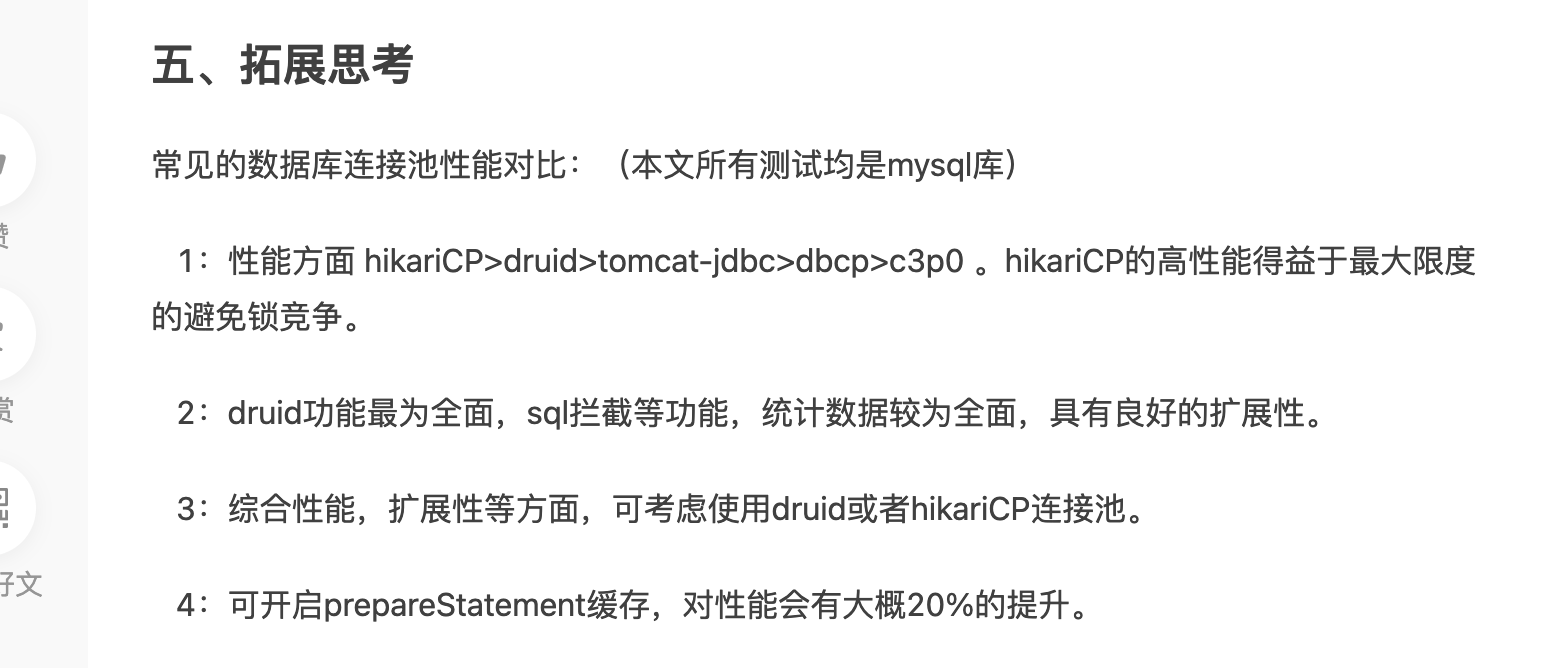1. JDBC操作数据库的步骤?
(1). 注册数据库驱动;
(2). 建立数据库连接;
(3). 创建一个statement语句;
(4). 执行sql语句;
(5). 处理结果集;
(6). 关闭数据库连接;
Connection connection = null; Statement statement = null; ResultSet resultSet = null; try { // 加载数据库驱动 Class.forName("com.mysql.jdbc.Driver"); // 获取与数据库连接的对象-Connetcion connection = DriverManager.getConnection("jdbc:mysql://localhost:3306/zhongfucheng", "root", "root"); // 获取执行sql语句的statement对象 statement = connection.createStatement(); // 执行sql语句,拿到结果集 resultSet = statement.executeQuery("SELECT * FROM users"); //遍历结果集,得到数据 while (resultSet.next()) { System.out.println(resultSet.getString(1)); System.out.println(resultSet.getString(2)); } } catch (SQLException e) { e.printStackTrace(); } catch (ClassNotFoundException e) { e.printStackTrace(); } finally { /* * 关闭资源,后调用的先关闭 * * 关闭之前,要判断对象是否存在 * */ if (resultSet != null) { try { resultSet.close(); } catch (SQLException e) { e.printStackTrace(); } } if (statement != null) { try { statement.close(); } catch (SQLException e) { e.printStackTrace(); } } if (connection != null) { try { connection.close(); } catch (SQLException e) { e.printStackTrace(); } } }
2. JDBC中Statement和PreparedStatement, CallableStatement的区别?
PreparedStatement支持sq的预编译,比Statement效率更高,而且能防止sql注入,另外PreparedStatement支持?操作符,更灵活。CallableStatement主要用于存储过程。
3. 说说数据库连接池的基本原理?

JAVA 服务器启动时会建立一定数量的池连接,并一直维持不少于此数目的池连接。客户端程序需要连接时,池驱动程序会返回一个未使用的池连接并将其表记为忙。如果当前没有空闲连接,池驱动程序就新建一定数量的连接,新建连接的数量有配置参数决定。当使用的池连接调用完成后,池驱动程序将此连接表记为空闲,其他调用就可以使用这个连接。
实现方案:连接池使用集合来进行装载,返回的Connection是原始Connection的代理,代理Connection的close方法,当调用close方法时,不是真正关连接,而是把它代理的Connection对象放回到连接池中,等待下一次重复利用。
@Override public Connection getConnection() throws SQLException { if (list.size() > 0) { final Connection connection = list.removeFirst(); //看看池的大小 System.out.println(list.size()); //返回一个动态代理对象 return (Connection) Proxy.newProxyInstance(Demo1.class.getClassLoader(), connection.getClass().getInterfaces(), new InvocationHandler() { @Override public Object invoke(Object proxy, Method method, Object[] args) throws Throwable { //如果不是调用close方法,就按照正常的来调用 if (!method.getName().equals("close")) { method.invoke(connection, args); } else { //进到这里来,说明调用的是close方法 list.add(connection); //再看看池的大小 System.out.println(list.size()); } return null; } }); } return null; }